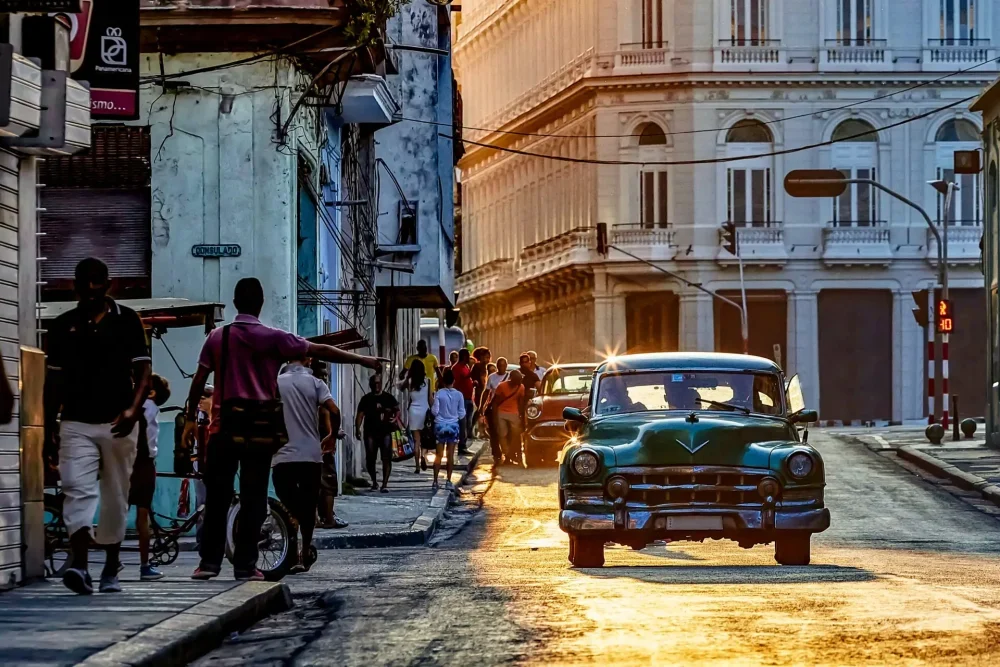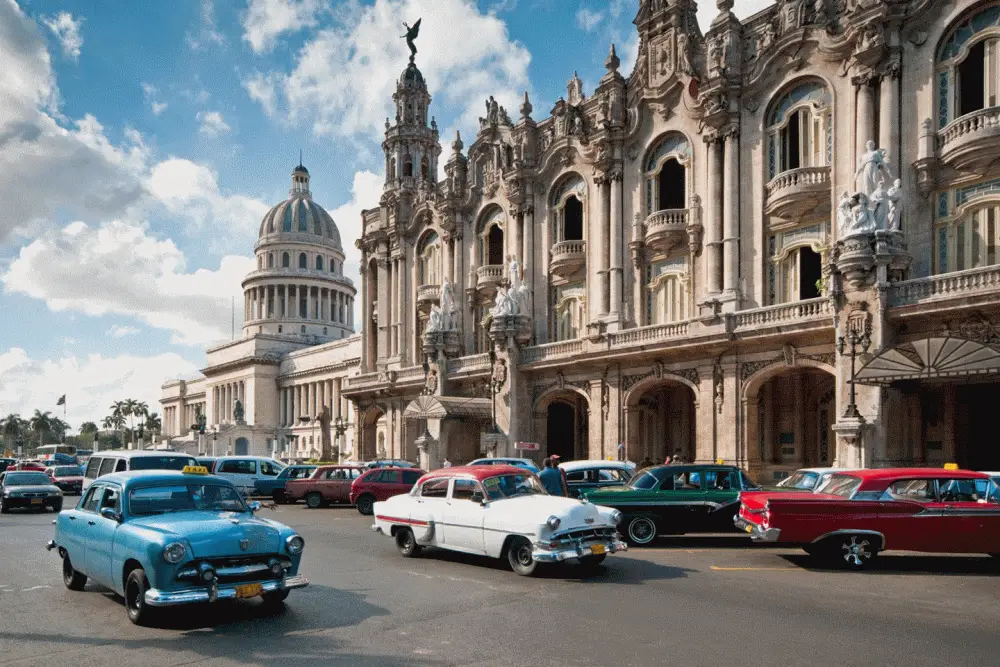An island in the Caribbean Sea is a unique combination of colonial architecture, rich cultural heritage, picturesque landscapes, and resort areas with transparent waters of the Atlantic and a tropical climate.
Each region of the country offers an original blend of historical values and natural beauty, turning a vacation into a full-fledged journey through eras and landscapes. Below are the main attractions that allow tourists to understand what to see in Cuba when planning a visit to the heart of Latin America.

Havana – a city of contrasts, nostalgia, and art
A vivid example of what to see in Cuba for a tourist is Havana, the capital and cultural center. The Old Town, listed as a UNESCO World Heritage Site, is abundant with buildings in the Spanish colonial baroque style, narrow streets with retro cars, and lively street music. Main points of interest: Capitolio, Malecon waterfront, Morro fortress, Revolution and Rum museums, Plaza de la Catedral square.
Interest in Cuban culture is vividly expressed in architecture, painting, music, and literature, whose traces are present on every corner. Havana combines the past and the present – from the grandeur of the colonies to the energy of street salsa.
Trinidad – a gem of colonial heritage
The city seems frozen in time, preserving cobblestone streets, 18th-19th century palaces, old mansions with wrought-iron balconies. Here you can find the Museum of Architecture, the Sanchez Ibarra House, as well as bustling craft markets. The city’s atmosphere is filled with the charm of bygone eras, and in the evenings, music echoes in the center.
Cienfuegos – a “French” region on the Caribbean coast
Located on the southern coast is Cienfuegos – a city with an unusual European-style layout for the island. Founded by French settlers, it stands out with its symmetrical streets, abundance of white buildings, and classical architecture. Among the attractions are the Tomas Terry Theater, Jose Marti Park, and the waterfront overlooking the Caribbean Sea. For those looking for what to see in Cuba, Cienfuegos offers a combination of cultural heritage and a peaceful atmosphere suitable for a leisurely vacation.
Varadero – one of Cuba’s main resorts
It is impossible to discuss what to see in Cuba without mentioning Varadero. This is the largest resort located on the Hicacos Peninsula, stretching along white sandy beaches with turquoise waters. The area offers comfortable hotels, water parks, golf courses, as well as catamaran excursions on the waters of the Atlantic Ocean. Underwater enthusiasts will find excellent conditions for diving and snorkeling here.
Cuba’s Nature: Vinales Valley
An iconic site symbolizing nature is the Vinales Valley, included in the UNESCO list. The relief with limestone cliffs (mogotes), tobacco plantations, rural settlements, and a network of caves, such as Indio and San Miguel, form an ecosystem that is valuable for both tourists and researchers. The place is ideal for ecotourism and hiking routes.
Zapata National Park – biosphere and swamps
Zapata is located on the island’s south, representing one of the largest swampy areas in the Caribbean. The national park is protected as a biosphere reserve. Rare birds and freshwater crocodiles inhabit this area. Main points of interest: crocodile farm, Laguna del Tesoro, Playa Giron. For those looking for what to see in Cuba, Zapata is an excellent choice: the place is popular among eco-tourism enthusiasts and nature excursions.
Cayo Coco and Cayo Largo – islands for secluded relaxation
The islands of the Jardines del Rey archipelago – Cayo Coco and Cayo Largo – reveal another side of relaxation in Cuba. The land areas are surrounded by reefs, ideal for diving and marine excursions. Beaches with fine white sand, all-inclusive hotels, and the absence of hustle make the resort areas particularly attractive for romantic trips and relaxation.
What to see in Cuba in the Collantes Mountains
One cannot overlook Collantes! The mountainous terrain at an altitude of about 800 meters above sea level hides the Topes de Collantes reserve, which features rare plants, waterfalls, and viewpoints with breathtaking views of the island’s south. Jeep routes and hiking excursions along forest trails are organized here.
Historical and Natural Areas: a brief list
Among the wide range of natural and cultural landmarks, the following stand out:
- the tropical Vinales Valley, combining landscapes and rural architecture;
- the museum network of Havana, from Capitolio to Ernest Hemingway’s house;
- caves in the vicinity of Trinidad, popular among climbers;
- mangrove shores of Cayo Coco, home to flamingos;
- underwater reefs off the coast of Varadero, perfect for snorkeling.
Each location emphasizes the interesting aspects that Cuba holds for enthusiasts of active and educational tourism.
Resorts: versatile destinations
Given the diversity, resorts can be divided into several categories depending on interests:
- Varadero, Santa Lucia, and Guardalavaca – classic beach vacations;
- Cienfuegos and Trinidad – historical and cultural tours;
- Cayo Coco, Cayo Guillermo, Cayo Largo – seclusion and snorkeling;
- the Collantes and Zapata areas – eco-expeditions and nature trails.
All destinations ensure a stable tourist flow and are considered an important part of the island’s tour program.

Conclusion
In conclusion, it is important to note that the question of what to see in Cuba always includes not only beaches but also cultural centers, museums, mountain routes, and protected areas. The country offers a unique variety that turns a vacation into not just a beach trip but a true cultural and natural discovery.
Thanks to the combination of history, nature, warm climate, and Latin American color, each visit to this part of the world leaves a deep impression and a desire to return.
 en
en  ar
ar  de
de  es
es  fr
fr  nl
nl  hi
hi  it
it  pt
pt  el
el 



